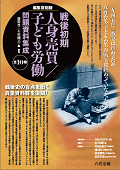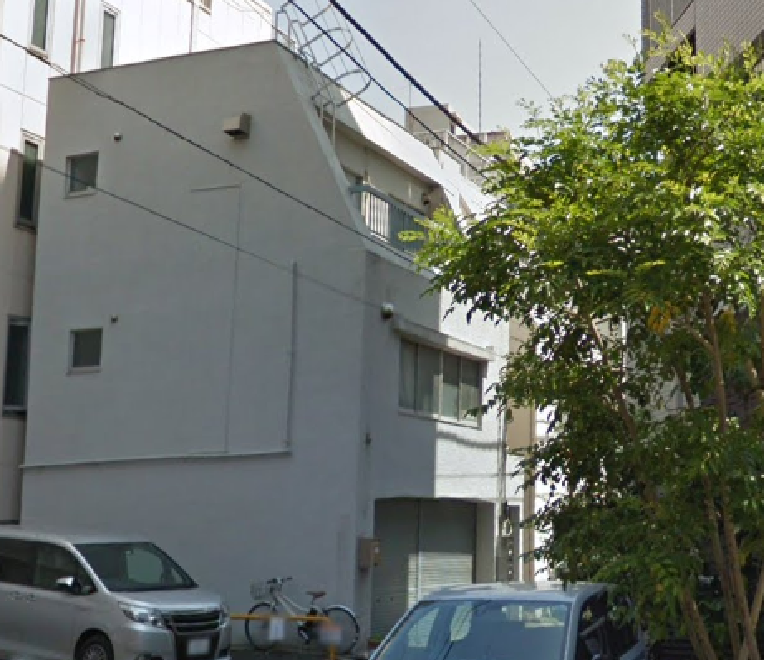『戦後初期人身売買・子ども労働問題資料集成』全10巻
The Complete Collection of Materials on Problems of Trafficking/Child Labor in Early Postwar Japan
《編集復刻版》 全10巻 好評刊行中!
藤野豊・石原剛志=編・解説
1945年。戦争は終わったが、女性たち子どもたちの戦争は終わっていなかった。
かつて帝国主義戦争遂行のため男たちの慰安に使用され、あるいは年季奉公や勤労動員という名で安い労働力として搾取されてきた、女性たち子どもたちは、敗戦後も生活困窮によって奴隷的労働を強制された。
戦後史の盲点を衝く貴重資料群を復刻!
敗戦後、民主主義社会建設の名のもとGHQにより公娼が廃止され、児童の労働への明確な基準が決定したが、生活困窮が直接人身売買に結びつく日本社会の土壌は容易に変化しなかった。
本編集復刻版は、第Ⅰ部 人身売買編 では女性や子どもの人身売買に関する雑誌記事や公文書資料を含む一九四五年より六〇年頃までの貴重資料を収録し、第Ⅱ部 子ども労働編 では年少労働と呼ばれた子ども労働の実態を明らかにすると同時に不当労働や脱法と呼べるような年少労働の問題を示すパンフレットや書籍の資料を収録した。
グローバルな規模で展開する現在の人身売買や子ども労働あるいは不当労働の問題を照らすためにも、高度経済成長前夜、日本国憲法のもと奴隷的労働を強いられた女性や子どもの実態を明らかにする貴重な歴史的資料として復刻する。
児童福祉史・児童教育史・女性史のみならず労働史・占領期研究等、人権の問題に取り組むすべての人々・研究機関に呈するものである。
◉体裁――A5判(第1巻~第6巻)・A4判(第7巻~第11巻)/上製/総約4,000ページ
◉揃定価――196、000円+税〈全3回配本〉(税込215,600円)
◉編・解説―― 藤野豊・石原剛志*解説はそれぞれ第1巻及び第7巻巻頭に収録
◉推薦―― 逸見勝亮(北海道大学名誉教授)
角田由紀子(弁護士)
岩田正美(日本女子大学教授)
増山均(早稲田大学教授)
第1回配本 2013年12月刊行済み 本体64,000円+税 ISBN978-4-905421-41-2
第1巻●人身売買資料Ⅰ(巻頭に解説=藤野豊)
第2巻●人身売買資料Ⅱ
第3巻●人身売買資料Ⅲ
第4巻●人身売買資料Ⅳ
第2回配本 2014年6月刊行済み 本体57,000円+税 ISBN978-4-905421-46-7
第5巻●人身売買資料Ⅴ
第6巻●人身売買資料Ⅵ
第7巻●子ども労働資料Ⅰ(巻頭に解説=石原剛志)
第3回配本 2014年12月刊行済み 本体75,000円+税 ISBN978-4-905421-50-4
第8巻●子ども労働資料Ⅱ
第9巻●子ども労働資料Ⅲ
第10巻●子ども労働資料Ⅳ
1~6巻総目次(PDF版)
7~10巻総目次(PDF版)
総目次(Word版)
『戦後初期人身売買・子ども労働問題資料集成』 パンフレット
↓
The Complete Collection of Materials on Problems of Trafficking/Child Labor in Early Postwar Japan,
ten volumes,
196,000 yen (total all volumes),
2013-2014,
with commentary by Yutaka Fujino & Takeshi Ishihara,
published by Rikka Press.
By 1945 the Second World War was over, but the war against women and children was not. During the imperialist war women and children were used as comfort women for male soldiers in the battlefields and exploited as cheap labor in the factories in the name of apprenticeship or national labor service. After the war, they were again forced to work in slavish conditions due to poverty.
This Collection reprints 300 valuable source documents on the problems of trafficking and child labor that prevailed under the new Constitution of Japan from 1945.
After the war, the General Headquarters of the Allied Powers abolished state-regulated prostitution and rigidly restricted child labor in order to construct a democratic society in Japan. Nevertheless, Japan’s social structure where poverty directly led to trafficking and child labor was not easily transformed.
This Collection is divided into two sections: on “Trafficking” and on “Child Labor”. The former includes many valuable materials such as magazine articles and official documents on trafficking between 1945 and 1960. The latter includes many pamphlets and books that illuminate not only the real situation of child labor (known and described as “juvenile labor” at the time) but also the circumstances of this labor, which we can see as the abuse of child labor through circumvention of the law.
This Collection reprints valuable historical materials documenting the actual situation of women and children who were forced to work in slavish conditions, regardless of the existence of the democratic Constitution of Japan, on the eve of the period of “high-speed economic growth”. The Collection contributes to understanding of contemporary global trafficking and child labor problems, and of problems of unfair labor practices.
We publish the Collection for all scholars and institutes who research and study not only the history of child welfare, of child education and of women, but also the history of labor, the era of the Japanese occupation by the General Headquarters of the Allied Powers, as well as human rights problems in general.













